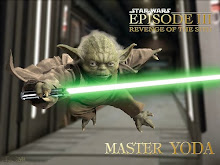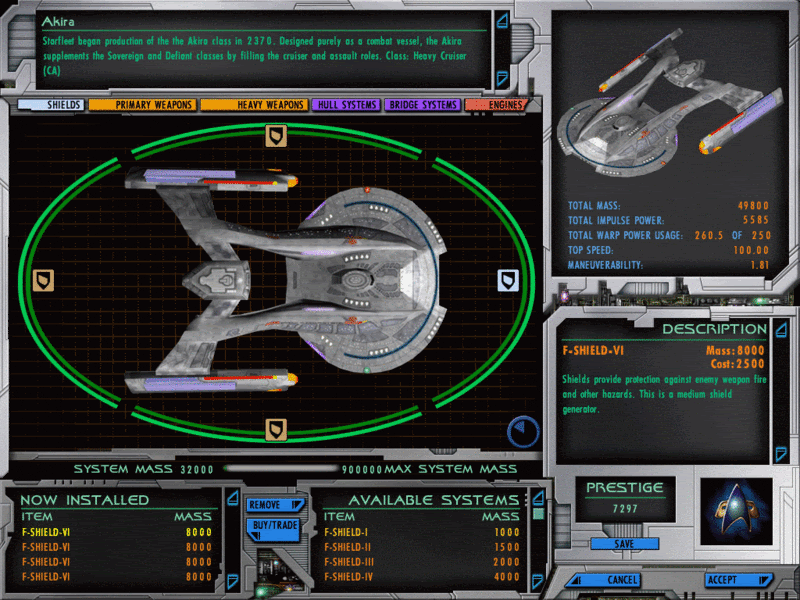
In addition to the rational, traditional and historical evidences on the existence of Muhammad bin Hassan Askari, the supporters of this theory cite a fourth evidence, the ‘miracles’, which they claim the four deputies’ have performed, as well as the knowledge of the Unseen, which they possessed.
We have demonstrated many such ‘Miracles’ while discussing the historical narrations on the birth of the son of Hassan and his existence in the last chapter. We will now mention the extraordinary performances presented by the four deputies, namely: Uthman bin Sa’id al-Umari, Muhammad bin Uthman, Hussain bin Ruh al-Nubakhti and Ali bin Muhammad al-Samri, the representatives of Imam Mahdi in the period of the minor Occultation, which extended around 70 years from 260 A. H to 329 A.H, the date of the death of the fourth deputy.
Sheikh Mufid has stated in ‘Al-Irshad’ the story of Muhammad bin Ibrahim bin Mahziyar, who doubted the existence of Imam Mahdi after the death of Imam Askari, and who said that, his father bequeathed a big amount of money for him, and directed him to fear Allah in that wealth and to submit it to the successor (Khalifah) of Imam Askari. But he said to himself: I will take this money to Baghdad, rent a house they’re on the coast and I will not tell anyone anything. If something becomes clear to me after that like the days of Abu Muhammad I will give it, otherwise I will spend it on my enjoyments and desires. He went to Baghdad and entered a house on the coast and remained there for some days. He was in that when behold a letter with a messenger came to him, and in it thus: “O Muhammad! With you is such and such amount…” till the whole story was narrated to him all that was with him, and something of which he has no knowledge of. He therefore gave the amount to the messenger. After some days, an announcement came to him, being appointed as a deputy in place of his father. (1)
Kulayni, Mufid and Tusi all mentioned many examples of miracles of the deputies and their knowledge of the Unseen, as evidence of their link with Imam Mahdi, and on the existence of Mahdi and his connection with the heavens.
Of these was the raising of Imam Mahdi of a camel and what is on it, to the sky.
Of these was the prevention of the Mahdi of a man from circumcising his son, and the death of the child immediately he was circumcised.
He also prevented a man from traveling on land and sea and instructed him to stay in Kufah, and the appearance of pirates and highway robbers on the caravans at that time.
Of these was the story of Al-Umari discovering the place of a trust forgotten by the messenger in his belongings, despite that the messenger did not take anything to remind him or a book on the issue.
Other miracles include:
- His telling Al-Umari, the date of his death, the day, the month and the year.
- The mention of strange responses from Al-Umari, and his telling a man of the details of his secret disagreement with his wife.
- The power and ability of the third deputy-Hassan bin Ruh Nubakhti to read a white letter and knowing its contents and responding to it immediately.
- In forming Ali bin Babawaih Saduq of the birth of two righteous children for him in future.
- Nubakhti informing a number of people of solving their problems in future in specific terms and in details, and the death of some people at the time specified before.
- The knowledge of Nubakhti of foreign languages and speaking them miraculously, without learning them.
- The fourth deputy Al-Samri, informed his companions, while he was in Baghdad, of the death of Ali bin Hussain bin Babawaih in Qum in the same day.
- He also informed the Shiites of his death after six days.
- Qasim bin Al-Ala informed of his imminent death after 40 days, and the return of his sight to him after losing it for a long time, and his telling of the long life of his son, unlike his earlier brothers.
- The knowledge of the deputies as regards the source of the wealth that cones to them.
- The telling of Muhammad bin Ziyad Al-Saimiri of his death in a particular time. (2)
Tusi pointed to the evidence of miracles, and considered it an evidence on the Imamate of the son of Hassan; and the establishment of his Occultation and his very existence, because they are reports that contain narrations related to the Unseen, and of foretelling something before it happens, in a miraculous manner. (Arguing on the basis that) no one knows that except the one informed by Allah, from the tongue of His Prophet (peace be upon him), and it reaches him from the one whose truthfulness has been ascertained by evidence. This is because miracles do not appear on the hands of liars. If this is established, it points to the existence of the one to whom that is attributed. (3)
REFERENCES
1.Mufid Al-Irshad, p.351
2. Kulayni: Al-kafi vol.1 p.519, Mufid: Al-Irshad p.352-355, Tusi: Al-Ghaybah, p.179,222,184,188, 193-195,243
3.Tusi: Al-Ghaybah, p.199
THE EVIDENCE OF CONSENSUS (IJMA’)
After the philosophical (rational), the traditional (transmitted), the historical and the miraculous evidences, there is also the evidence of consensus (Ijma) pointed to by some of those who believe in the theory of the existence of Muhammad bin Hassan Askari and his birth.
The first person to point to this evidence of consensus was Sa’ad bin Abdullah Ash’ari al-Qummi in ‘Al-Maqalat wa al-Firaq’, p. 106.
Sheikh Saduq has reported from Nubakhti that: the entire Shiites have agreed (have reached a consensus), that Imam Hassan Askari has left behind an issue who was the Imam. He said that: “Anyone who believed the Imamate of eleven Imams from the forefathers of the Qa’im, it is incumbent on him to accept the Imamate of the twelfth, on the basis of the texts from his fore-fathers which contain his name and lineage and the consensus of the entire Shiites on the belief in his Imamate. He is the Qa’im who will appear after a very long Occultation. He will fill the earth with justice and equity. (Ikmal al-Din, p. 44 and 93)
This is what comes to the mind first these days, when many people argue that the issue of the existence of Imam Mahdi Muhammad bin Hassan Askari, is one of the issues of consensus of opinion in the ranks of the Twelver-Imam Shiites to say the least.
THE OCCULTATION
A- WHY OCCULTATION?
After presenting all the rational, traditional and historical evidences on the existence of Muhammad bin Hassan Askari, and his birth in the middle of the third (3rd) century of Hijrah, his occultation from sight and non-appearance; and taking up of the leadership of the Islam; and assuming the position of Imamate, constitute the greatest challenges for those who believe in his existence. And due to this, they had to explain the wisdom behind his occultation. They did present a number of theories in interpreting the perplexing phenomenon of the occultation, as follows:
(1) The Theory of Unknown Wisdom
Sheikh Saduq was inclined towards this theory in his ‘Ikmal al-Din’, and saw the necessity of finding wisdom in the occultation of the Imam, based on the signs of Allah’s wisdom in the previous evidences (Imams). He said that: ‘Our belief in the infallibility of Imam Mahdi will necessitate our acceptance of the existence of wisdom behind his occultation.’ (1)
Sayyid Murtada ‘Alam al-Huda’ has denied the necessity of knowing the specific reason for the occultation, and that the general knowledge on that is enough, in addition to the belief in the infallibility of the Imam. He considered the knowledge of that similar to the knowledge of what comes in the ‘Mutashabihah’ (ambiguous) verses of the Great Quran. (2)
Likewise, Sheikh Tusi stated the necessity of supposing a reason for the occultation of the Sahib al-Zaman and his hiding, and the belief in the existence of palatable wisdom in that, even if we do not know it in details. This is just as we suppose reasons and wisdom for Allah’s creation of animals and harmful beings, ugly forms and pain in children, even if we do not know the wisdom therein in details. He said: “ If we knew his Imamate through evidence, and knew his infallibility through another evidence and knew that he has gone into occultation, we take his occultation in the manner that is compatible with his infallibility. There is no difference between the two cases? (3)
Sheikh Muhammad Hussain Kashif Ghita said in ‘Asl al-Shiah wa Usuluha’, “The objection on the wisdom (behind the occultation) is invalid, if the evidences are established on the necessity of the existence of the Imam in every period of time. The world is never devoid of evidence. His existence is benevolence and what he does is another benevolence.” He considered the position more meticulous and ambiguous than that. He also confessed his ignorance of the wisdom, and non-arrival at what is real good (Maslahah). (4)
(2) The Theory of Distinction
There is another theory in interpreting the ‘occultation of the Imam’, that is the theory of distinction and differentiating the Shiites and sifting them, so as to know the truth of their faith in the Mahdi and their perseverance before trials.
Saduq and Tusi have transmitted a number of reports in this regard, from both Imams Baqir and Sadiq (peace be upon them.). Some of these reports indicate the nonappearance of the ‘Sahib al-Amr’ till after the elimination of one third of (human) population, when only very few people remain, andafter that the Shiites would sifted like the sifting of wheat from darnel. (5)
One of those reports states: “ There must be an occultation for the owner of this affair, till those claiming this affair rescind their position. It is a trial from Allah, through which He tests His creation, your minds cannot grasp this matter, and your ambitions fall short of that. If you live (long enough) you will perceive him.” (6)
This resembles another of those reports which says: “The occultation of the Mahdi is like the delay of the punishment sought by Nuh (A.S) from the heavens, to the extent that groups of those who believed in him became apostates, one group after the other---similarly, the occultation of the Qa’im will be long, to the extent that the truth will be clear and will glare from any cloudiness, by the apostasy of all those Shiites that are not true to their faith, and were close to hypocrisy (Nifaq), when the Qa’im is well established and there is peace and tranquility (everywhere).” (7)
It was only Saduq who entertained this view. All of Mufid, Murtada and Tusi have abandoned it, even though; they have reported some reports containing it. Tusi has interpreted those narrations on the trial of the Shiites during the occultation, that they mean the trial of the Shiites coincided with the occultation, not that the latter was the cause of the former. (8)
(3) The Theory of Fear
This is the strongest of these theories in interpreting the cause of the occultation. Kulayni has reported in ‘Al-Kafi’, and Saduq also in ‘Ikmal-al-Din’ a number of traditions from Imam Sadiq, pointing to the fact that the cause of the occultation was fear on the life (of the Imam) and insinuation (Taqiyyah).(9)
Sheikh Mufid in ‘Al-Irshad’ said: “Hassan left behind his son the Awaited for the rule of truth. He did conceal his birth and kept his affairs a secret, due to the difficult circumstances of the time, and the serious search by the authorities of the time for the Mahdi, and their doing all that is possible in order to find him. That was also due to what the Shiite sect had spread regarding him, and their waiting for his appearance. So his son did not appear in his lifetime, and the general populace did not know him after his death.”(10)
Mufid considered the circumstances surrounding the occultation of Imam Mahdi as more difficult that the circumstance of the earlier Imams of the ‘Ahl al- Bayt, who did not hide themselves from the people. They were protecting (themselves) through taqiyyah. The rulers of the time knew of the emergence of the Mahdi by means of the sword, and due to that they were eager in pursuing and eliminating him. The reason that prevented him from coming out (to the public) was the lack of supporters and helpers.” (11)
Sayyid Murtada emphasized in his ‘Al- Shafi’ thus: “The cause of his occultation was the threat of the unjust rulers, and their not allowing him free hand to conduct himself in things he has under his control. When they stood before what he wants (to do), the responsibility of performing the functions and duties of the Imamate falls. And if he has fears on his life, it became necessary to go into hiding and occultation.” (12)
Al-Karajiki says in ‘Kanz al-Fawaid’: “ The reason for the occultation of the Imam was the threat from the unjust rulers and their search (for him) to kill him, and his being informed (by Allah) that whenever he brings himself out, they will kill him, and that whenever they are able to get him, they will eliminate him. It is only when he will be established and is powerful that it becomes incumbent on him to perform his duties,that is when there is no hindrance and fear has been removed as regards his life and existence. Whenever such is not possible it is compulsory to practice taqiyyah and occultation due to this reasons is mandatory. This is because freeing oneself from harm is mandatory rationally and traditionally. (13)
Tusi limited the causes of the occultation to fear. He said: “There is no cause to prevent his appearance except fear on his life, if not because of that, it would not be right for him to go into hiding. He bears hardship and harm, as the position of the Imams, as well as the Prophets, (peace be upon them) is higher due to the great hardships they bear for Allah’s sake. “ 14
However, why should Imam Muhammad bin Hassan fears his being killed, while Imam Hussain did sacrifice his life in Karbala? Sayyid Murtada, Sheikh Tusi and Al-Karajiki responded to that by saying: “No one among humans can stand the position of the Mahdi as he is the last of the Imams, and the welfare and good of all responsible and matured men rest squarely on him. “ (15)
This response presupposes a number of assumptions:
1- Specifying the Mahdism of the twelfth Imam by the earlier Imams, and a pointer to him before (his appearance).
2- The existence of political crisis and the enmity and fear of the Abbasid authorities regarding the Mahdi, and the existence of greater fear on the part of the Imam, that existed during the years of the earlier Imams under the Umayyad and Abbasid rules.
3- The finality of Imamate in the twelfth Imam and limiting Imamate to him.
4- The prohibition of taqiyyah on the part of the Mahdi before his appearance.
Otherwise if we say that ‘ the earlier Imams did not specify the identity of the Mahdi previously, then there will not be any need for him to go into hiding from the time of his birth. If it is established that the relationship between the Ahl al-Bayt’ and the Abbasids during that time was normal and positive and that there was no pressure or political strains, and then there was no breed for the occultation. If we say that the twelfth Imam is one of the Imams not the last of them, as the Imamate Shiites believe in the beginning till the end of the third century. Then there will no any necessity for the occultation, because the earlier Imams were all possible targets for killers, but they did not go to occultat5ion. And if we say that the twelfth Imam is supposing permitted to use taqiyyah as the other Imams, it was with his ability to deny his identity and his Mahdism till the time he appears (as the Mahdi), and he would not need to go into hiding from the time of his birth.
B: THE OCCULTATION, WHERE?
Most of the reports that mention the Mahdi Muhammad bin Hassan Askari indicate that he was in the house of his father in ‘Surr Man Raa’ the then capital of the Abbasid rule, and that those who witnessed and saw him in the lifetime of his father, saw him in that house. Some of the narrations state that: ‘He went out to pray on the body of his father, who died and was buried in Samirra’i. And that he met after that with a delegation from Qum, which came searching for the new Imam. That he remained inside the house for many years, until the attack of Mu’tadid's forces in the canopy (Sardab). The Abbasid Caliph, Nasir bi Allah has built a tent on the place of the canopy (‘Sardab’), it still exists there to this day. The Shiites used to visit it from all places. It is called the tent (Qubbah) of Sardab of the occultation, beside the graves of Imams Hadi and Askari in the city of Samirra’i’, north of Baghdad.
Sheikh Mufid cited in ‘Al-Irshad’ the story of a man called ‘Ali bin Hussain’ saying that: He visited Imam Hadi in his house in Samirra’i’ and that he stayed with him for three days. As he also mentions the story of Hassan bin Fadl, who says that he passed by the camp, i.e. Samirra’i, and Imam Hadi sent to him a bag with Dinars in it. (16)
Mufid also transmitted from Hassan bin Abdul Hamid that he doubted the affair of one of the deputies of the Mahdi called Hajiz bin Yazid, and then he went to the camp. Out of it came to him what confirmed to him the truth of the deputy and put an end to his doubts. (17)
C: WHAT IS THE TIME- FRAME OF THE OCCULTATION?
The period of the occultation, at the inception of the doctrine ranges between days, months and years not more than 10, as indicated by many narrations mentioned by Kulayni in ‘Al-Kafi’ and Tusi in ‘Al-Ghaybah’. (18)
Other reports on the other hand were saying that: ‘It will be as long as about 30 to 40 years’. (19) Some other narrations transmitted by Nu'mani in ‘Al-Ghaybah’, pointed to limiting the period of the occultation more to the tender age of Imam Mahdi at the time of his appearance. Nu’mani interpreted such reports with his young age, at the time the Imamate was bestowed on him. (20)
Tusi had reported another tradition from Imam Baqir (peace be upon him) that: “The owner of this affair (the Mahdi) is not more than 40 years old”. (21)
Other reports indicate that his age may be more than 120 years. (22)
Tusi has reported in ‘Al-Ghaybah’ from Abu Abdullah (peace be upon him) that he said: “Do you deny that Allah will extend the life of the owner of the Affair (the Mahdi) as he extended the life of Nuh (A.S)?” He responded to those who find flaws in the length of the period of occultation, and it’s crossing what is normal, that the issue is not as they stated. Even if it is so, it is possible that Allah will do something extraordinary for some kind of good (Maslahah). (23)
Saduq and Tusi cited the occultations of Musa bin Imran, Yusuf bin Ya’qub, Yunus bin Matta, people of the cave, the owner of the Donkey, Nuh, Salman, the Persian, Dajjal, Luqman bin Ad, Rabi bin Daba’ and Ya’rib bin Qahtan, who were said to have left their people for specific periods of time.
D: WAY OF CONFIRMING THE IDENTITY OF THE MAHDI
Anyhow, the long occultation has led to and is still leading to an objective problem, namely: The way of recognizing and confirming the identity of the Mahdi after his appearance. This problem was discussed in the beginning, especially during the minor Occultation, but it imposed itself with the passage of time….It became the center of discussion between the supporters of the existence of the Mahdi and those who rejected that at that time.
Sheikh Saduq confronted the opponents on this issue, and he said in response to the Mu’tazilites and those who reject (the idea of Mahdi), those who were finding fault on this point: “ It is possible through the transmission of that of the one, whose report serves as an evidence even if from among his close friends. It is also possible that a miracle may appear to confirm that. The second response is the one we depend on, and we use it against our opponents, even though the first one is also valid”. (24)
Both Mufid and Tusi have pointed to this issue: ‘The problem of recognizing the Mahdi and confirming his identity at the time of his appearance, by mentioning a big number of miracles and strange universal signs, that appear from the Mahdi, as signs of his time. Sayyid Murtada has treated the problem, while discussing the possibility of a temporary appearance during the period of the occultation. He set as conditions, the appearance of signs to confirm his truth. (25)
E: THE SIGNS OF THE APPEARANCE
Kulayni in ‘Al-Kafi’, Saduq in ‘Ikmal al-Din’, and ‘Uyun Akhbar al-Rida’, Mufid in ‘Al-Irshad’, Tusi in ‘Al-Ghaybah’ and Al-Iyashi in his Tafsir, all mention a group of narrations linking the appearance and occurrence of some universal signs, related to halting the movement of stars and planets, changing their rule and things similar to that; or like the sun becoming dull from midday to late afternoon; or the appearances of the chest and the face of a man in the sun disc; or like the occurrence of solar or lunar eclipses in an abinormal manner; or like the solar eclipse in the middle of the month of Ramadan, and the lunar eclipse at the end of it; or like the speaking of the banner and the sword to Imam Mahdi and , his call that it is not permissible to sit down after that time. He will go out and kill the enemies of Allah wherever he finds them. He will establish the laws of Allah and judge by His injunctions.
In addition to the story of the sun rising from the west, and the appearance of a star from the east, its light will be similar to that of the moon…. the disobedience of servants to their masters and killing them ….the deformation of people of innovations to monkeys and pigs…the servants taking over the lands of their masters…. in addition to a call from the heavens to be heard by all people of the earth, people of each language in their own language, the rising of the dead from their graves till they return to the world, and their recognizing each other and exchange of visits, in addition to all these, Mufid mentions that: ‘Jibril will descend on the Qa’im (Mahdi) to pay his allegiance at the time of his appearance’. Tusi says that: ‘The companions of the Qa’im will be carried to the place of the Mahdi in a miraculous manner in a twinkling of an eye!
Mufid mentions some universal signs that will occur at the time of the appearance, like the prolongation of the day ten- folds, to become 240 hours!
This is what Tusi interprets as regard a similar tradition where he says: “When the Qa’im appears, Allah will command the stars and the planets to slacken its movement, to the extent that the day in his days will be like ten days of your time, and a month will be like 10 months, and a year like 10 years of your time”.
Kulayni reports a tradition from Imam Baqir (peace be upon him),in which he foretold that the Shiites would use things like (telephone, television) in speaking to the Qa’im, and viewing him from a distance, and from all regions. That will be at the time of his appearance.
Some narrations state that at the time of the appearance of the Qa’im, the earth will be brighten by the light of its Lord, and men will not be in need of sunlight, and darkness will be eliminated. A man will live long in his domain and he will have one thousand (1000) male children, without a single female!
Finally, the narrations on the appearance of the Mahdi discuss the period of his rule. One of such narrations says that: “He will rule for seven years, which will be like seventy (70) years of our time”.
Another report says that the Qa’im will rule for three hundred and nine (309) years, like the period of time spent by the people of the cave in their cave. A third report says he will rule for nineteen (19) years only.(26)
REFERENCES:
p. 21 and 85
Tusi: ‘Talkhis al-Shafi’ of Murtada, vol. 4, p. 211
Tusi: ‘Al-Ghaybah’, PP. 57-58
ibid. p. 71
Ikmal al-Din, p. 346, 348, Al-Ghaybah, p. 203 204 and 206
Ikmal al-Din, p. 360,Al-Ghaybah, p. 104,204
Ikmal al-Din, p. 352,357, Al-Ghaybah, p. 104,108
Tusi: Al-Ghaybah, p. 203
Al-Kafi, vol. 1pp.337-338, 340, Ikmal al-Din, p.481
p. 345
Mufid: Al-Amali, Al-Fusul al-Mukhtarah, p.395
Murtada: Al-Shafi, vol. 3p, 149
ibid,.vol. 1, p. 371
Al-Ghaybah, p. 203
Al-Shafi, vol. 1p. 147,Al-Ghaybah, p.64, Kanz al-Fawaid, vol, 1, p.341
Mufid: Al-Irshad
ibid.,p. 355
Al-Kafi, vol.1, p. 338,Tusi: Al-Ghaybah, p. 104
Al- Kafi, vol. 1 p. 340
ibid, p. 323
Al-Ghaybah,p. 258
Nu’mani: Al-Ghaybah,p.126
Al-Ghaybah,pp.76-78
Ikmal al-Din,vol. 1,pp.61-62
Al-Shafi,vol. 1, p. 149
Kulayni: Al-Kafi,Al-Raudah, p.201, Saduq: Ikmal al-Din, p.268, Uyun Akhbar Al-Rida, vol.1,p.63,Mufid: Al-Irshad, p.355, 359,362,Tusi: Al-Ghaybah, p.274,283-285. Al-Iyashi in his Tafsir, vol.2, p.326.





























































































































No comments:
Post a Comment